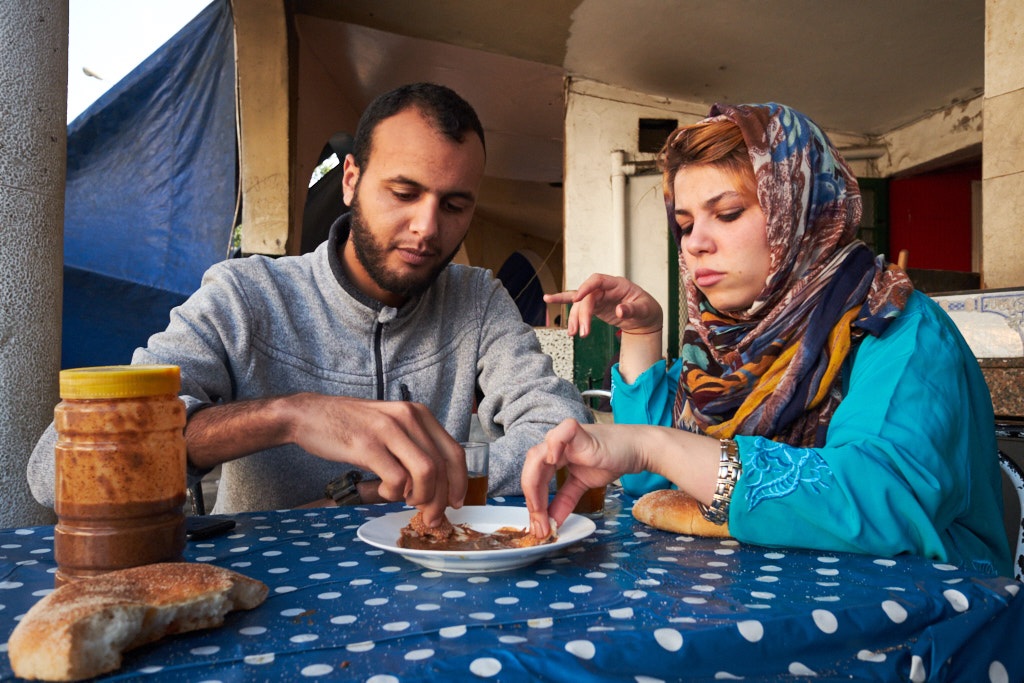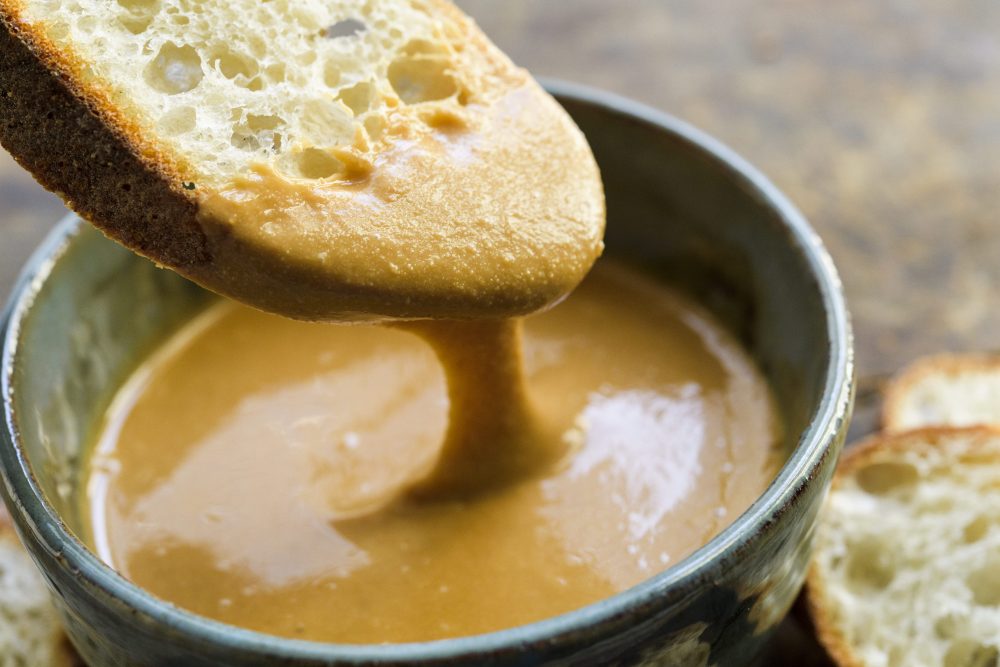In Morocco, thick, round flatbreads known as khobz are used in lieu of silverware, scooping up stews, grilled meats, salads and—our recent favorite—a savory-sweet dip called amlou.
Amlou is made by pureeing almonds, honey and argan oil, a nutty, smoky oil that is Morocco's answer to extra-virgin olive oil. Neither overly sweet nor strongly nutty, amlou has a richness that had us dipping again and again. Argan oil is hard to get in the U.S., but we found olive oil a good substitute.
To make amlou at home, process 1½ cups toasted blanched slivered almonds with 1 teaspoon kosher salt for 2½ minutes, or until a smooth nut butter forms. Pulse in 2 tablespoons honey. With the processor running, stream in 7 tablespoons olive oil.
Use for dipping bread, or add less oil to form a thicker paste and use as a sandwich spread. Refrigerate leftovers for up to a month. Bring to room temperature before serving.

See below for more of our favorite Moroccan recipes:
Moroccan Ginger-Lemon Skewers
Here, grilled lemon halves, drizzled with honey and squeezed over the charred chicken skewers, added a final note of sweet-tart acidity that helped balance all the bold, savory seasonings.
Moroccan Semolina Flatbreads (Harcha)
Made with semolina, these thick flatbreads have a texture somewhere between cornbread and an English muffin. They get a rich flavor from butter and yogurt mixed into the dough, and can be sweet (pair them with jam or amlou) or savory (serve them with our tagine).
Moroccan Meatball Tagine with Green Olives and Lemons
This tagine is traditionally served with eggs, poached in the flavorful sauce. Serve the tagine directly from the skillet, using a spoon to break the eggs and let the yolks run into the sauce. Offer crusty bread, naan or pita to soak up the sauce.
Join the conversation on Facebook, Twitter, Instagram and Pinterest.




